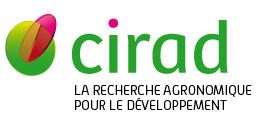High throughput diagnosis of avian influenza : application to surveillance of wild birds
Hammoumi S., Gil P., Gaidet N., Dodman T., Martinez D., Albina E.. 2007. In : Camus Emmanuel (ed.), Cardinale Eric (ed.), Dalibard Christophe (ed.), Martinez Dominique (ed.), Renard Jean-Franﺣ۶ois (ed.), Roger Franﺣ۶ois (ed.). Does control of animal infectious risks offer a new international perspective ? : proceedings of the 12th International Conference of the Association of Institutions of Tropical Veterinary Medicine, Montpellier, France, 20-22 August 2007. Montpellier : CIRAD, p. 47-49. International Conference of the Association of Institutions of Tropical Veterinary Medicine. 12, 2007-08-20/2007-08-22, Montpellier (France).
In the context of highly pathogenic avian influenza (HPAI) emergence in Africa in early 2006, it has become necessary to increase the surveillance level in this region, including surveillance of wild birds suspected to play a role in transmission. A first surveillance campaign was launched in Africa in early 2006, within the framework of a regional Technical Cooperation Programme (TCP) of FAO. It showed a prevalence of 3.3% of LPAI in wild birds out of 5288 samples analysed manually. Here, we present our strategy for the development of a high throughput diagnostic line of AIV. Field collection of samples was carried out by Wetlands International and CIRAD. Cloacal and tracheal swabs collected from wild birds were immediately placed in conservative medium and sent to Montpellier where an automation workstation (Biomek FxP, Beckman) was used for RNA extraction. Specific quantitative RT-PCR were then run to identify influenza A virus positive samples and H5 or H7 subtypes. These subtypes could be further characterized by sequencing of the hemagglutinin cleavage site and by virus isolation. This strategy was successfully applied to wild bird surveillance in Africa and Eastern Europe during winter 2006/2007, within the framework of a second regional TCP of FAO.
Documents associﺣ۸s
Communication de congrﺣ۷s
Agents Cirad, auteurs de cette publication :
- Albina Emmanuel — Dgdrs / Dgdrs - dims
- Gaidet-Drapier Nicolas — Es / UMR SENS
- Gil Patricia — Bios / UMR ASTRE
